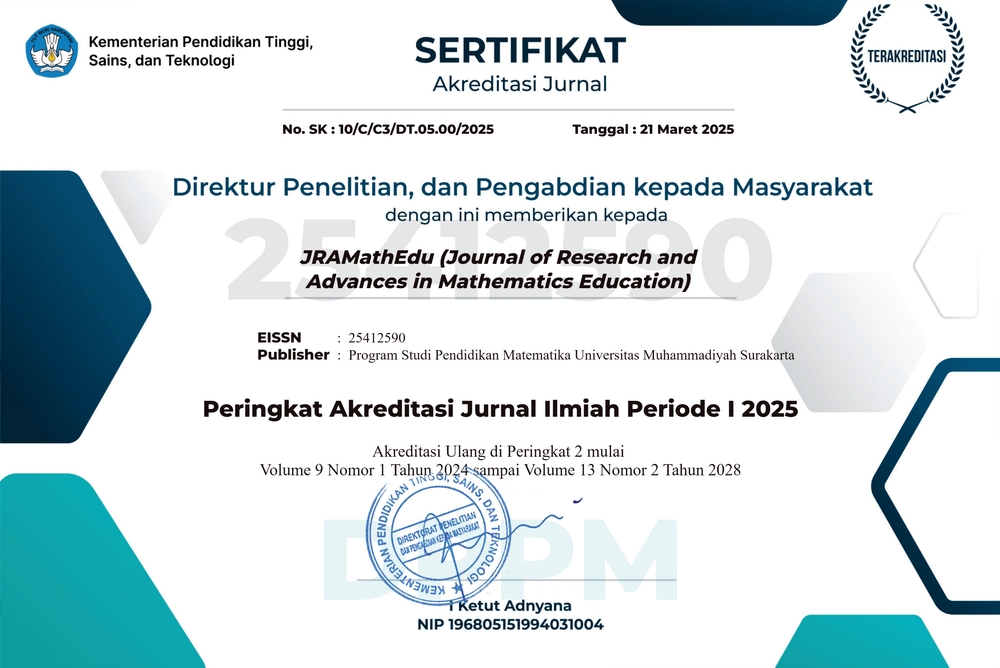Social semiotics analysis of Palestinian mathematics textbooksfor eighth grade
DOI:
https://doi.org/10.23917/jramathedu.v5i1.8960Keywords:
Book analysis, mathematics books, functional grammar, social semioticsAbstract
Mathematics textbook analysis can serve to understand the teaching and learning processes in the mathematics classroom. The present study utilizes a social semiotics framework to analyze the triangle unit of the Palestinian mathematics book for grade 8. The results of the study indicate that the authors utilized the representational aspect of the mathematical object to introduce those objects to the reader. Moreover, the nature of mathematics resulting from this unit is that of a subject that learners do not need material processes to discover, so it is enough to reason about it mentally to arrive at the mathematical objects and relations. The authors used a plural first-person pronoun to describe the need to engage with theorems and inverse theorems. They used the singular second-person pronoun to attract the attention of the reader tospecific features of the mathematical objects. The authors did not use any pronoun when stating the theorem. Some of the connectors were verbs, nouns, and sentences, where the most used connector was the sentence, especially in reasoning. This use of the sentence in mathematical reasoning indicates that the authors wanted to advance the mathematical reasoning as a narrative to facilitate it for the reader.
Downloads
Submitted
Published
How to Cite
Issue
Section
License
Copyright (c) 2020 Wajeeh Daher, Ijteyad abu Thabet

This work is licensed under a Creative Commons Attribution-NonCommercial 4.0 International License.


















